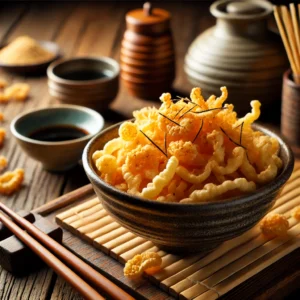Introduction to Tamisie
Tamisie, a cherished dish deeply rooted in Turkish cuisine, is more than just a meal – it is a testament to centuries-old traditions, cultural richness, and the warmth of Turkish hospitality. Known for its hearty flavors and straightforward preparation, Tamisie has evolved from its origins in the Ottoman Empire to become a staple in Turkish households and a symbol of communal gatherings.
Historical Evolution
Tamisie’s journey begins in the heart of the Ottoman Empire, where it originated as a nourishing staple for soldiers. Its simplicity and robust flavors made it a practical choice during military campaigns, providing sustenance and comfort in challenging times. Over centuries, Tamisie transformed from a military ration into a beloved dish enjoyed by families across Turkey. Recipes were passed down through generations, adapting to regional preferences and incorporating local ingredients, which added depth and diversity to its culinary profile.
Ingredients and Preparation
At the core of Tamisie are humble yet flavorful ingredients that reflect the essence of Turkish cooking. Coarse bulgur wheat forms the base, renowned for its nutty flavor and hearty texture. Onions, tomatoes, and green peppers provide a savory foundation, while a blend of spices such as cumin, paprika, and mint imbues the dish with aromatic complexity.
The preparation of Tamisie is straightforward yet crucial for achieving its distinctive taste. Vegetables are finely chopped and sautéed until tender, allowing their natural flavors to meld. Spices are carefully measured and added to enhance the dish with layers of warmth and depth. Once combined with bulgur and simmered to perfection, Tamisie emerges as a satisfying blend of textures and flavors that evoke a sense of culinary comfort.
Regional Variations
Throughout Turkey, Tamisie assumes diverse regional variations that showcase the country’s geographical and cultural tapestry. In eastern Anatolia, where rugged landscapes meet fertile valleys, Tamisie often incorporates lamb or beef for added richness. The use of local herbs and spices like sumac or Aleppo pepper infuses dishes with bold, earthy flavors that reflect the region’s rugged terrain.
Coastal areas, with their abundance of fresh seafood, offer a maritime twist to Tamisie. Here, ingredients like shrimp or mussels complement the dish’s base, adding a maritime flair that appeals to coastal dwellers’ tastes. Meanwhile, in the bustling markets of Istanbul, where culinary traditions converge, Tamisie may feature a blend of urban sophistication and traditional flavors, catering to diverse palates and preferences.
Cultural Significance
Beyond its role as a culinary delight, Tamisie holds deep cultural significance in Turkish society. It is often served during festive occasions such as weddings, religious holidays, and family gatherings, symbolizing abundance, hospitality, and togetherness. The act of sharing Tamisie with loved ones fosters bonds and creates lasting memories, making it a cherished part of Turkish cultural identity.
The preparation and serving of Tamisie are steeped in tradition, with each step embodying a reverence for heritage and a celebration of community. From the communal act of dining to the ritualistic sharing of food, Tamisie transcends its culinary function to become a symbol of unity and kinship among Turks worldwide.
Health Benefits
Nutritionally, Tamisie offers a wholesome balance of essential nutrients and dietary benefits. Bulgur wheat, a staple ingredient, is rich in fiber and low in fat, promoting digestive health and providing sustained energy. The inclusion of fresh vegetables such as tomatoes and peppers adds vitamins, minerals, and antioxidants, contributing to overall well-being and immune support.
The moderate use of spices like cumin and paprika not only enhances Tamisie’s flavor profile but also offers potential health benefits. These spices are known for their anti-inflammatory properties and antioxidant effects, which may help reduce the risk of chronic diseases and support overall health.
Modern Interpretations
In recent years, Tamisie has transcended its traditional roots to captivate the palates of global food enthusiasts and chefs alike. Modern interpretations of Tamisie embrace innovation while respecting its cultural heritage, offering creative twists that appeal to contemporary tastes and dietary preferences.
Chefs around the world are experimenting with Tamisie, exploring vegan, gluten-free, and health-conscious variations that cater to diverse culinary lifestyles. Fusion cuisines blend Tamisie’s hearty flavors with international influences, creating innovative dishes that celebrate cultural diversity and culinary creativity.
From gourmet restaurants to home kitchens, Tamisie’s adaptability and versatility shine through in dishes that resonate with both tradition and innovation. Whether served as a comforting main course or reinvented as an appetizing side dish, modern interpretations of Tamisie invite diners to experience its timeless appeal in new and exciting ways.
Practical Tips for Cooking Tamisie
For those eager to recreate Tamisie at home, success lies in using quality ingredients and mastering fundamental cooking techniques. Start with coarse bulgur wheat, ensuring it is properly soaked and drained to achieve the desired texture. Fresh vegetables should be finely diced and sautéed until tender, allowing their natural sweetness to enhance the dish.
When seasoning Tamisie, strike a balance between spices to achieve a harmonious blend of flavors. Adjust spice levels according to personal preference, adding extra herbs like parsley or dill for added freshness. Consider incorporating nuts or dried fruits for texture and complexity, elevating Tamisie from a simple dish to a culinary masterpiece.
Visual Guide and Recipes
Visualize the richness of Tamisie through vibrant images that capture its inviting colors and appetizing textures. Sample recipes can guide beginners through traditional preparations, offering step-by-step instructions and pro tips for achieving authentic flavors.
Interviews and Personal Stories
Gain deeper insights into Tamisie’s cultural significance through interviews with Turkish chefs, home cooks, and locals who share their personal stories and experiences. Discover the nostalgic memories and familial traditions associated with Tamisie, revealing its enduring place in Turkish culinary heritage.
FAQs About Tamisie
What is the best way to serve Tamisie?
Tamisie is traditionally served warm as a main course alongside yogurt, salads, or flatbreads. It can also be enjoyed as a side dish to complement other Turkish specialties.
Can Tamisie be made ahead of time?
Yes, Tamisie can be prepared in advance and reheated before serving. Store leftovers in an airtight container in the refrigerator for up to several days.
Is Tamisie suitable for vegetarians?
Yes, Tamisie can be adapted for vegetarian diets by omitting meat and focusing on vegetables, grains, and spices for flavor.
What makes Tamisie a unique dish in Turkish cuisine?
Tamisie stands out for its simplicity, using basic ingredients to create robust flavors that highlight the essence of Turkish culinary traditions.
Conclusion
Tamisie represents more than just a dish – it is a cultural ambassador that embodies Turkey’s rich history, culinary diversity, and spirit of hospitality. From its origins in the Ottoman Empire to its modern interpretations worldwide, Tamisie continues to captivate food enthusiasts with its hearty flavors, nutritional benefits, and timeless appeal.
Whether enjoyed in bustling Istanbul markets, family gatherings, or global kitchens, Tamisie invites all to savor its heritage and embrace the traditions that make it a beloved part of Turkish culinary identity. As you embark on your culinary journey with Tamisie, may each bite bring you closer to the heart of Turkish culture and the joy of sharing food with loved ones.






















+ There are no comments
Add yours